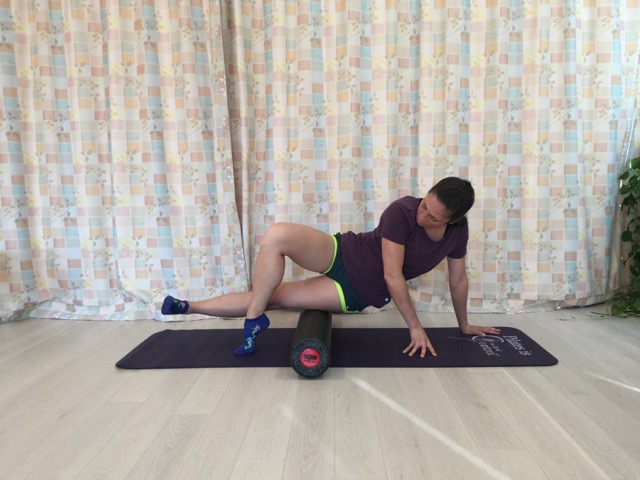Self-care for the client/patient with iliotibial band friction syndrome:
As with any inflammatory condition, self-care for iliotibial band friction syndrome (ITBFS) begins with RICE: rest, ice, compression, and elevation. Most important of these are ice and rest. It is extremely important that the client/patient stop running or cycling if these activities are the underlying cause. If the condition is not severe, then the client/patient might be able to continue participating in the sport if either the distance is decreased or other factors have been improved (e.g., correcting an underlying condition like genu valgum or overpronation). However, it is also likely that participation will delay healing and prolong the condition.
A good guideline for icing is to apply ice to the affected region until the area is numb; icing should be done a minimum of two to three times per day until the condition is resolved and the pain is gone. If overpronation is one of the causative factors, consider recommending to the client/patient to either get orthotics or shoes that have good arch support. If genu valgum is a causative factor, recommend that the client/patient strengthen the gluteus medius and stretch the adductor musculature.
Medical approach to iliotibial band friction syndrome:
The medical approach to treatment of ITBFS is usually RICE and the addition of anti-inflammatory medication, whether it is a non-steroidal anti-inflammatory drug (NSAID) or cortisone (steroidal anti-inflammatory drug) medication. It is likely that X-Rays or a MRI might be done to rule out an internal pathologic condition of the knee joint.
Manual therapy case study:
Stephen is a 34-year-old who began cycling recreationally about two months ago. He went from not cycling at all to cycling approximately 3-5 miles per day. Within a few weeks of cycling, he began to notice pain on the side of his right thigh, near his knee. Concerned that he might have a problem with his knee joint, he consulted his medical doctor who examined his knee and ordered X-Rays and told him that his knee looked good. The doctor told him that it was probably a minor soft tissue problem and told him to take ibuprofen. Encouraged that his knee was ok, he continued cycling. The ibuprofen dulled the pain but did not eliminate it. And within a few weeks, even with the ibuprofen, his pain increased to the degree it had been before he saw the doctor. He finally decided to consult a clinical orthopedic manual therapist.
Upon observation, the therapist noted mild swelling at the lateral femoral epicondyle. Palpation of the ITB over the lateral femoral condyle and Ober’s and Noble compression tests elicited local pain. Palpation also demonstrated tightness of Stephen’s TFL and adductor musculature as well as myofascial trigger points in his gluteus medius. Upon postural exam, the therapist noted that Stephen’s right arch dropped excessively, his right patella rotated medially, and his right femur fell into adduction. These postures were confirmed when the therapist asked Stephen to march in place, occurring with weight bearing each time his foot struck the ground. Manual resistance showed weakness of the right gluteus medius.
The therapist told Stephen that it was likely that he had ITBFS, with overpronation of his right foot and mild genu valgus as contributory underlying conditions and recommended RICE and manual therapy. She also recommended a self-care regimen of rest, ice, and foam rolling, as well as strengthening his gluteus medius, and strengthening the muscles that would actively support the arch structure of the foot and/or wearing orthotics to passively support the arch. Stephen agreed to stop cycling for a while and to ice and strengthen the gluteus medius; but he decided to use orthotics to passively support the arch instead of attempting to improve the arch via strengthening.
The therapist began with gentle soft tissue manipulation to the entire right lower extremity, including gentle effleurage strokes over the distal ITB from distal to proximal. The therapist then iced the distal ITB as she worked with moderate to deeper pressure into the middle and proximal ITB, tensor fasciae latae, gluteus medius, upper gluteus maximus, and adductor musculature. This was followed by moist heat to the proximal thigh and then stretching of the tight musculature. This treatment was repeated twice each week for two weeks. By the third week, the inflammation was nearly gone and the therapist added in moderate depth massage to the distal ITB, including cross fiber friction, with the intent to break up any patterns of adhesions that might have formed.
At the end of four weeks, Stephen’s condition was resolved and he was able to gradually recommence cycling, this time beginning with fewer miles. Stephen decided to continue seeing the massage therapist for proactive care approximately once a month.



